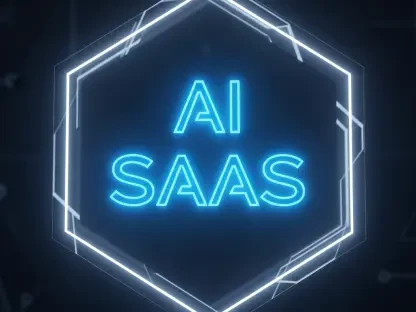I’m thrilled to sit down with Vijay Raina, a leading expert in enterprise SaaS technology and tools, whose thought leadership in software design and architecture has shaped the way we understand the intersection of AI and software markets. Today, we’re diving into the seismic shifts happening in the industry, particularly how advancements from cutting-edge AI players are challenging traditional software-as-a-service (SaaS) companies. We’ll explore the competitive dynamics, the financial stakes, and the innovative strategies SaaS firms are adopting to stay ahead, as well as the broader implications for enterprise workflows and beyond.
How do you see AI innovations, particularly from major players, reshaping the landscape for SaaS companies right now?
AI is fundamentally changing the game for SaaS companies by introducing new ways to interact with and deliver software solutions. The ability of AI to simplify user interfaces through conversational systems is a big deal. Instead of navigating complex dashboards, users can now potentially get what they need through natural language prompts. This shift threatens to reposition traditional SaaS apps as mere data sources in the background, while AI takes center stage as the primary interface. It’s a wake-up call for many companies to rethink their value proposition and user experience.
What’s behind the growing concern on Wall Street about AI posing a threat to established SaaS businesses?
Wall Street’s concern stems from the fear that AI could disrupt the core business model of SaaS companies. There’s this notion floating around—sometimes called the “Death of SaaS” or “SaaSmageddon”—where investors worry that users might bypass traditional software apps entirely, opting for AI-driven platforms that can handle multiple tasks in a more seamless, conversational way. The anxiety is that if AI can replicate or even improve on what SaaS tools offer, it could erode market share and subscription revenue for these established players.
Can you elaborate on how new app-building capabilities within AI platforms might change user behavior with software applications?
Absolutely. When AI platforms start offering the ability to build or customize apps directly within their ecosystem, it creates a paradigm where users might not need to log into separate SaaS tools for specific functions. Imagine asking an AI to handle customer support tickets or generate personalized sales responses without ever opening a dedicated app. This could streamline workflows but also risks making traditional SaaS interfaces obsolete, as users gravitate toward a single, AI-powered hub for their needs.
How are SaaS companies responding to these competitive pressures from AI advancements?
Many SaaS companies are doubling down on innovation to stay relevant. They’re integrating AI into their own platforms to enhance functionality—think smarter automation and predictive analytics baked into their tools. Some are also acquiring AI startups to quickly bolster their capabilities, which can be a smart move if it helps them stay ahead of the curve. Additionally, they’re focusing on deep integration within enterprise workflows, leveraging their existing datasets and network effects to maintain a competitive edge.
What are your thoughts on the financial dynamics of leading AI companies, especially when we see massive revenue growth alongside significant operating losses?
It’s a fascinating dichotomy. On one hand, the revenue growth—sometimes in the billions within just a few months—shows incredible demand for AI solutions, especially in consumer and business subscriptions. On the other hand, huge operating losses highlight the immense costs of scaling AI, from infrastructure to talent to R&D. It’s not uncommon for tech disruptors to run at a loss while capturing market share, but it does raise questions about long-term sustainability and how these companies balance growth with profitability.
Beyond software, how do you see AI innovations impacting other industries or sectors in the near future?
AI’s reach is expanding rapidly into areas like video creation and consumer devices, which could challenge players in media and hardware. For instance, new AI-powered video tools could compete with social platforms by offering unique content creation capabilities. We’re also seeing hints of AI venturing into personal tech, potentially rivaling established device makers. The broader implication is that AI isn’t just a software disruptor—it’s a cross-industry force that could redefine how we create, consume, and interact with technology.
What is your forecast for the future of SaaS in light of these AI-driven disruptions?
I believe SaaS will continue to evolve rather than disappear, but it’s going to look very different in five to ten years. Companies that embrace AI as a partner—using it to enhance rather than replace their offerings—will likely thrive. We might see a hybrid model emerge, where SaaS platforms serve as robust back-end systems while AI provides the front-end user experience. The key will be adaptability; those who cling to old models risk being left behind, while those who innovate could capture new value in this AI-enhanced landscape.









